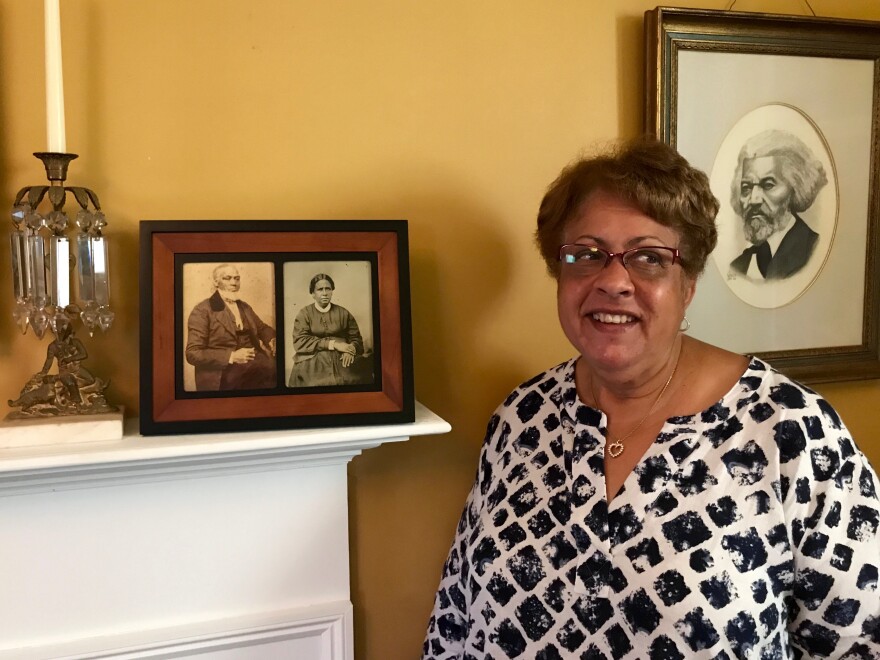Nathan and Polly Johnson were two of New Bedford’s leading abolitionists in the mid-1800s. It was in their house that a 20-year-old Frederick Douglass found refuge after fleeing slavery on a Maryland plantation.
When Douglass was a boy, the plantation owner’s wife began teaching him how to read. She stopped the lessons when her husband objected, but by then, Douglass was determined to keep learning.
“Frederick has this whole series of ways that he tricks the white boys to teach him letters,” said Lee Blake, President of the New Bedford Historical Society. “He would trade pieces of bread for a letter. He would see young boys in the street writing with chalk, and he would ask them what the letters were, or he would dare people to spell their name: ‘What’s your name?’ ‘Can you spell your name?’”
Douglass escaped the plantation in 1838, aided by his fiancé Anna Douglass, who was born a free woman. She was a seamstress, and was able to sell some furniture so that Frederick had money to travel.

“She sews him a sailor uniform…and in those days, sailors were so ubiquitous that he can get on a train in a uniform, and he takes a train up to New York, and no one even questions him, because sailors are everywhere,” said Blake.
Slavecatchers also were everywhere, and Douglass kept a low profile in New York. But he eventually met David Ruggles, a well-known African American underground railroad conductor. Ruggles discovered that Douglass had experience a caulker, filling in the cracks on ships to keep them waterproof. Douglass learned caulking after his master decided that he needed a skill. Slavemasters would often “rent out” their slaves, and Douglass was rented out in Maryland to work on the docks as a caulker.
David Ruggles advised Douglass to head to New Bedford, then the hub of the whaling industry, where Douglass could likely find work in his trade.
When Anna and Frederick arrived in New Bedford, they were told to seek out Nathan and Polly Johnson. They heard this was the place to be, and that the black community would embrace them.
Frederick did find work as a caulker, but eventually was hired by Epraim Peabody, the minister of a local church, to shovel coal.
“Peabody allows him to use his library. So now Douglass has some work, and he has a place where he can hone his skills even more,” said Lee Blake. “And in New Bedford, he’s able to start preaching in a lot of the churches, not so much as a lay minister but almost like a lecturer.”

Douglass spent 3 or 4 years in New Bedford. In about 1840, he was invited to a speak at the Atheneum on Nantucket - an opportunity for him to tell his own moving personal story, which many people hadn’t heard. In the audience that day was William Lloyd Garrison from The Liberator, which was the primary publication of the day for the abolitionist movement.
“Essentially, he’s discovered on Nantucket. In those days, people would be on a circuit – a lecture circuit. And Douglass is invited to be on the abolitionist lecture circuit,” Blake said. “Because he speaks so well, people didn’t believe he had ever been a slave. So he would have to deal with people getting up and saying that he was an imposter, that he really was a free black, and how could he say all these things? And eventually, that’s what leads him to write his first autobiography, which is published in 1845.”
Every year, members of the New Bedford community come together to celebrate Frederick Douglass’s legacy by reading aloud from his first autobiogaphy.







